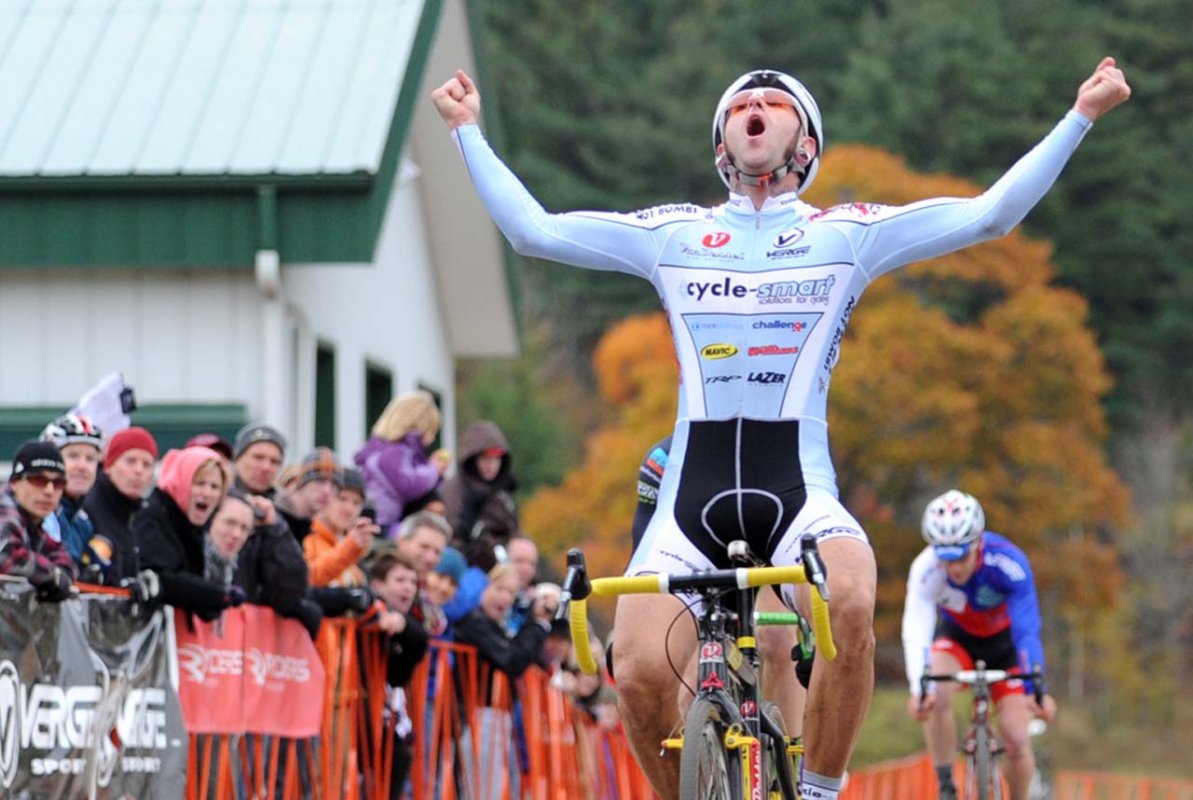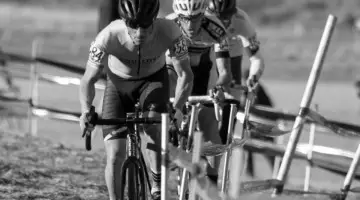When you think about the coming season, whether that’s a turn towards mountain bike or road racing, or even further into the year and the next cyclocross season, it’s important to understand the structure of your training to have the best possible results for your highest target events and races.
You can think of your cycling as ever smaller periods, from your entire cycling career, to a season to just a few days. Understanding personal goals, how to get there and the work and recovery loads you need is an evolving process, especially for the majority of us that are juggling personal demands with our cycling aspirations.
Adam Myerson of Cycle-Smart walks us through working in cycles to get the most of our training in this week’s Training Tuesday piece.

Have big goals like a UCI race win? You need to have some micro and macro perspective on your riding. © Natalia Boltukhova | Pedal Power Photography
by Adam Myerson
In previous articles, I set out blueprints for a training plans that would take us from winter base training to summer peaking. In order to execute those plans successfully, we have to be specific about each aspect. Training of any kind is essentially a process of stressing a system, letting it recover and adapt to the stress, and then stressing it again at a higher level. This cycle of training exists at every level; from intervals and recovery in a single workout to a hard season of racing followed by a rest in the fall or winter. Even on the largest scale, you often see riders who miss a season due to injury and come back the following year stronger than they were before they stopped. Can you imagine taking a rest season?
Seeing your training in this pattern of repetitive components can help you plan from top to bottom and find a rhythm as you execute it. It’s no different than those fractal art pictures that look like a bunch of random swirls; if you stare at them long enough and change your focus, instantly a picture appears that you hadn’t seen before. In the context of our training plan, that picture is your fitness. The cycles you see are:
1. Career
2. Season/Calendar Year
3. Macrocycle (phase or period of season, 2-18 weeks)
4. Mesocycle (2-6 weeks)
5. Microcycle (1 week)
6. Minicycle (3-4 days)
Many coaches define their cycles in different ways but use the same terms, which can sometimes be confusing. The key is understanding that each process of stress, recovery and adaptation builds on itself in repetition to create the cycle. Two minicycles make a microcycle, four microcycles make a mesocycle, multiple mesocycles make a macrocycle, and so on.
The Career
Many riders may not even have begun to think this large, but it can be important to know what cycling means to you in the long term. Do you want to be a European pro, or perhaps find time to stay fit enough to be competitive in local racing despite the pressures of a job or family? Both ends of the spectrum are difficult challenges that require different approaches and different mindsets. Planning for career goals is an important part of what will motivate you to go out the door every day to train.

Understanding your reason for riding can extend your career whether it’s as a European pro or an amateur racer. © B. Hazen / Cyclocross Magazine
The Seasonal Cycle
A season can vary greatly from rider to rider based on geography, style, ability, and a host of uncontrollable circumstances that have yet to be set in motion. Generally, a season has a typical structure of peaks and valleys that starts at a certain level of fitness and ends, overall, at a higher one. For each season, it’s important to have concrete goals. Upgrading to the next category, making it onto the national team, or improving your time up Mt. Washington are all things to build a season around. Some riders may simply be looking to stay at the level they are at, but perform well as certain times of the year.
The Macrocycle
A macrocycle is a 2-12 week period within a season where a particular energy system or type of training is focused on. Your six main types of macrocycles are the off season, the preseason, the base period, the intensity period, the peaking period, and the maintenance period. We detailed some of these in previous articles.
The Mesocycle
The mesocycle is a 2-6 week training period within a macrocycle. It typically consists of 3-5 progressive weeks of training followed by a recovery week.
The Microcycle
The microcycle is normally a period of one week, though it can be adjusted to eight or six days long.
The Minicycle
The minicycle is a period of 3-4 days. There are two in each microcycle. For most people who live according to a weekday/weekend work schedule, the first is the Monday through Wednesday or Thursday period, and the second is Thursday or Friday through Sunday. In an eight-day microcycle, the Monday-Thursday minicycle can be repeated twice. In the case of limited training time during the week due to work or other concerns, the shorter, three day Friday-Sunday minicycle can be done first, followed by the four day cycle. This moves more of your shorter workouts to the weekdays, and lets you maximize the weekends where you likely have more time. Within each minicycle, the days play out in a traditional LeMond/Koechli-style program, as follows:
Monday: Recovery day
Tuesday: Short ride, Sprints, Maximal intensity
Wednesday: Middle distance, Middle intensity
Thursday: Long ride, Light intensity
Friday: Rest day
Saturday: Same as Tuesday
Sunday: Combination of Wednesday’s intensity and Thursday’s duration
Increasingly, I reverse the cycles as the default, with the threshold work Tuesday and Wednesday, a recovery day Thursday, and a sprint workout Friday to kick off the weekend.
The details here will allow you to color in some of the outlines we’ve drawn in previous articles, and help you see both the big picture and the little details hidden within. With each installment we’ll help you build, execute, and understand a yearly training plan by breaking down and explaining each aspect as we go.
More information at: www.cycle-smart.com




























